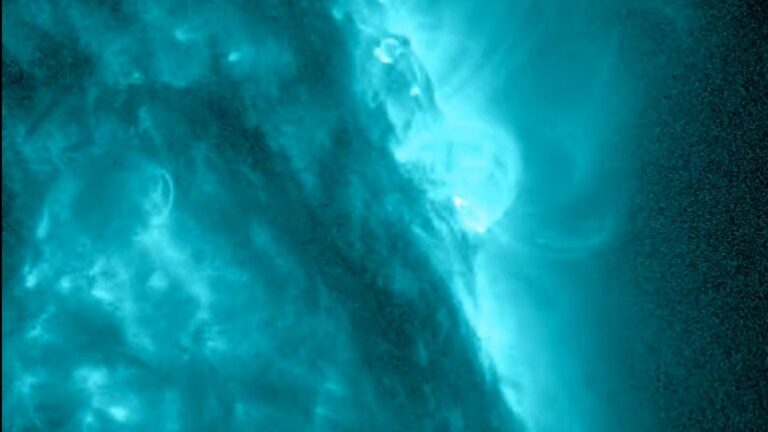
[ad_1]

An active sunspot that is just about to exit the visible disk of the sun shot its parting flare at Earth, causing a radio blackout in Africa and the Middle East Friday morning (Sept. 16).
The solar flare, classified as M8 in the second-most energetic category of flares, departed from the sun at 5:49 a.m. EDT (0949 GMT) on Friday, disrupting shortwave radio communications in the sun-facing parts of the world. According to Spaceweather.com (opens in new tab), amateur radio operators in Africa and the Middle East could have experienced signal distortion for up to one hour after the flare.
The U.K. space weather forecaster Met Office predicts there is a chance of further flares today before the sunspot AR3098 disappears behind the sun’s limb (the edge of the sun’s visible disk). Space weather forecasters think a coronal mass ejection (CME), a burst of charged plasma from the sun’s upper atmosphere, the corona, may have accompanied the flare and might be heading toward Earth. If so, the planet might experience a geomagnetic storm later in the weekend, the Met Office said in a statement (opens in new tab).
Related: Extreme solar storms can strike out of the blue. Are we really prepared?
There was another, milder flare on Thursday (Sept. 15), the Met Office said, associated with a CME that is still being analyzed for its potential to hit and affect Earth. All that might be good news for aurora chasers as the spectacular polar lights might become stronger and visible farther away from their usual polar areas.
After the lively sunspot AR3098 takes its final bow, which is expected to happen later during the weekend, things are expected to get quieter, the Met Office said in the statement. There are three other sunspots currently visible on the sun’s face, all of which “appear stable and relatively magnetically simple,” the Met Office said. Space weather forecasters currently don’t detect any suspicious activity that might signal an approach of other active sunspots behind the sun’s eastern limb that might not yet be visible.
There is also currently a coronal hole in the sun, an opening in the magnetic field lines, from which solar wind blows at a higher rate than usual, which might further contribute to the aurora activity at higher latitudes. All of the solar wind and CMEs combined are not expected to trigger more than a minor geomagnetic storm, meaning electrical and radio communications technologies on Earth should not experience any disruption.
Follow Follow us on Twitter @Spacedotcom (opens in new tab) and on Facebook (opens in new tab).
[ad_2]